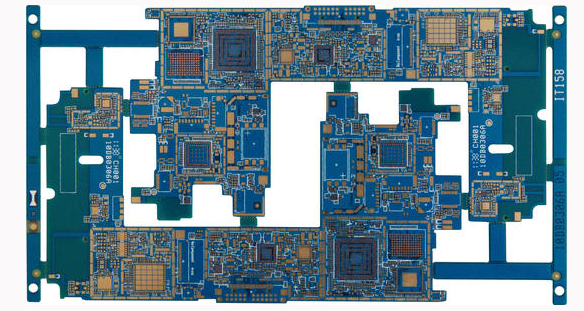The formation principle of impedance interference of circuit board conductor
Printed circuit boards {Printed circuit boards}, also known as printed circuit boards, are providers of electrical connections for electronic components.
Printed circuit boards are often represented by "PCB", but cannot be called "PCB boards".
Its development has a history of more than 100 years; its design is mainly layout design; the main advantage of using circuit boards is to greatly reduce wiring and assembly errors, and improve the level of automation and production labor.
PCB Factory: The formation principle of circuit board wire impedance interference
At present, in the copy board manufacturing of printed circuit boards in PCB factories, the wires are mostly copper wires. The physical properties of copper metal itself determine that there must be a certain impedance in the process of conducting electricity. The inductance in the wires will affect the voltage signal. Transmission, the resistance component will affect the transmission of the current signal, and the influence of the inductance in the high-frequency line is particularly prominent.

A certain piece of wire on the printed circuit board can be regarded as a very regular rectangular copper strip. Let's take a piece of wire 10cm long, 1.5mm wide, and 50μm thick as an example. The impedance can be seen by calculation.
The wire resistance can be calculated by the formula:
R=ρL/s(Ω)
where L is the length of the wire (meters), s is the cross-sectional area of the wire (square millimeters), and ρ is the resistivity ρ=0.02. The resistance value of the wire is about 0.026Ω by calculation.
When a piece of wire far away from other conductors is much longer than its width, the self-inductance of the wire is 0.8μH/m, then a 10cm-long wire has an inductance of 0.08μH. Then the PCB factory can calculate the inductive reactance presented by the copy board wire from the following formula:
XL=2πfL
where π is a constant, f is the frequency of the signal passing through the wire (Hz), and L is the self-inductance per unit length of the wire (H). In this way, we can calculate the inductance of the wire at low frequency and high frequency respectively:
When f=10KHz, XL=6.28*10*103*0.08*10-6≈0.005Ω;
When f=30MHz, XL=6.28*30*106*0.08*10-6≈16Ω
Through the above formula calculation, we can see that the wire resistance is greater than the wire inductance in low-frequency signal transmission, while the wire inductance is much greater than the wire resistance in high-frequency signals.
iPCB is a high-tech manufacturing enterprise focusing on the development and production of high-precision PCBs. iPCB is happy to be your business partner. Our business goal is to become the most professional prototyping PCB manufacturer in the world. Mainly focus on microwave high frequency PCB, high frequency mixed pressure, ultra-high multi-layer IC testing, from 1+ to 6+ HDI, Anylayer HDI, IC Substrate, IC test board, rigid flexible PCB, ordinary multi-layer FR4 PCB, etc. Products are widely used in industry 4.0, communications, industrial control, digital, power, computers, automobiles, medical, aerospace, instrumentation, Internet of Things and other fields.